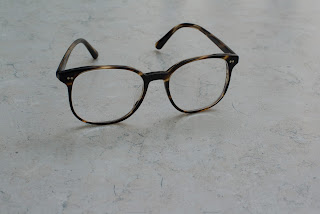Lab 2 Aperture
Still Life
f 2.0 We can see how blurry the background and the foreground are and even the glasses are not very sharp anywhere. I focussed on the thing that keeps the glasses straight on the nose and it seems that the metal circles are not sharp although they are almost at the same distance as the thing. The middle ground is focussed.
Therefore the DOF is shallow which makes the image more dimensional.
ISO 100, 50 mm, f 2.0, 1/320
f. 5.6 There is blur in the foreground and background but the glasses look more sharp than f2.0 We can at least see the metallic round at the right corner of the glasses. It is not as commercial as f16 and not as artistic as f2.0 but it is more appropriate than f2.0 if we want to sell them because of its more deep DOF.
ISO 100, 50 mm, f 5.6, 1/40
f16 Everything looks in focus although I did not change the focal point, therefore, it is a deep Depth of field. It is not as artistic as f2.0
ISO 100, 50 mm, f 16.0, 1/5
Portrait
f1.4 The DOF is very shallow and we see that her eyes are sharp and focus but the remaining of her face is very blur and the background (the wall lines) and foreground (some parts of her scarfs) are even more blurry. It is not the best aperture for her position.
ISO 2000, 50 mm, f 11.0, 1/40
f11 Although there is a bit of blur in the foreground and background, because I am closed to the subject, the image is much more sharper than f1.4. I can see the details in her face and hair. The DOP is deep.
ISO 100, 50 mm, f 1.4, 1/125
Architecture
I used f16 because I cannot go smaller with my lens. The image is very sharp and focused everywhere but it makes the image flat.
ISO 100, 50 mm, f 16.0, 1/25











































